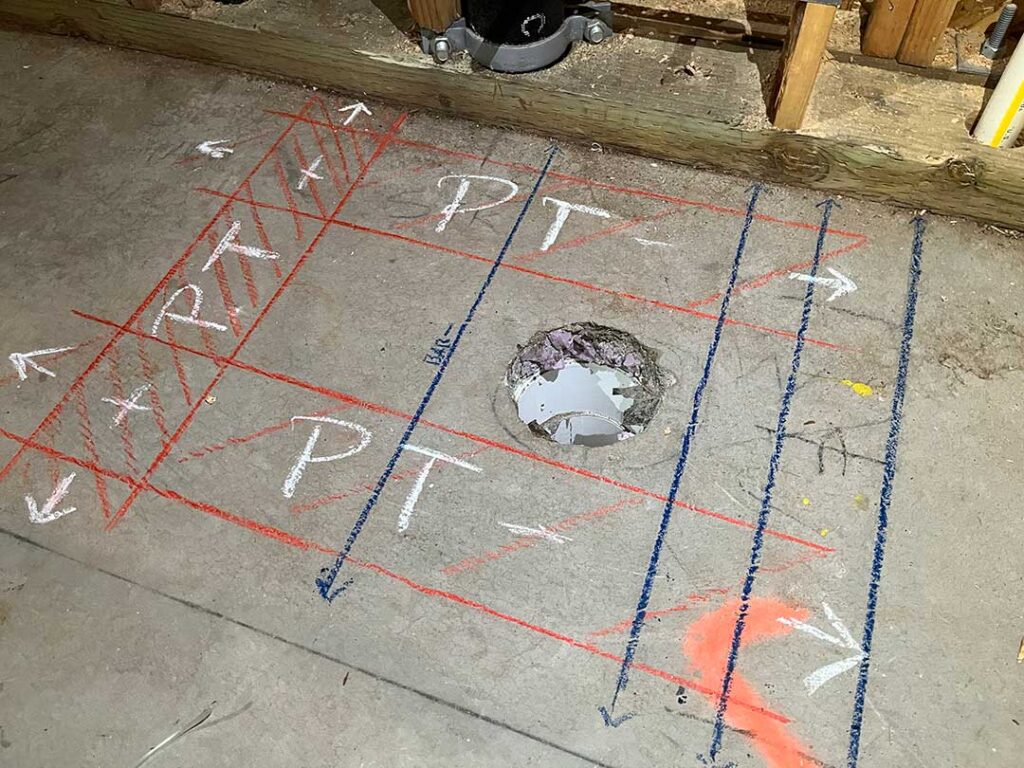Specialist Tips for Optimum Concrete Scanning Outcomes
Specialist Tips for Optimum Concrete Scanning Outcomes
Blog Article
Unveil the Transformative Power of Concrete Scanning in Making The Most Of Effectiveness and Safety And Security
Concrete scanning has arised as a critical tool in the building market, providing unmatched benefits in improving project performance and making certain safety and security requirements. The transformative power of concrete scanning lies in its capability to supply thorough insights and real-time information, changing just how tasks are planned and performed.
Significance of Concrete Scanning
Making certain the structural stability and security of construction jobs starts with the essential action of conducting complete concrete scanning. Concrete scanning is a non-destructive method utilized to spot and map subsurface components within concrete structures.
The relevance of concrete scanning can not be overemphasized, as it plays a vital role in stopping crashes, minimizing job delays, and making sure the lasting toughness of the building. By recognizing potential dangers prior to the building phase starts, home builders can apply appropriate precaution and make educated choices regarding the style and implementation of the task. Furthermore, concrete scanning aids in optimizing job timelines and spending plan by avoiding unforeseen expenses and hold-ups that might emerge as a result of unanticipated blockages within the concrete. Eventually, purchasing comprehensive concrete scanning is a proactive method that enhances both efficiency and safety and security in building tasks.
Exactly How Concrete Scanning Functions
Concrete scanning operates as a crucial device in construction projects by using innovative innovations to spot and map subsurface aspects without triggering structural damages. Ground Permeating Radar (GPR) and Electromagnetic Induction (EMI) are two primary methods made use of in concrete scanning. GPR works by producing high-frequency radar pulses right into the surface, which jump back when they encounter subsurface things or gaps. The moment considered the signal to return shows the deepness and location of the items. EMI, on the other hand, uses magnetic fields to determine differences in product compositions, such as determining rebar or conduits within concrete structures.
During the scanning process, the information collected is evaluated in real-time, enabling instant identification of potential hazards or challenges beneath the surface. This details aids in decision-making, making certain that building and construction tasks proceed safely and successfully. Additionally, 3D imaging software program can be used to develop topographic maps of the subsurface components, even more improving task planning and implementation. By employing these sophisticated technologies, concrete scanning significantly minimizes the danger of expensive problems and injuries on construction sites.
Advantages of Concrete Scanning
Using sophisticated scanning technologies in construction projects provides a multitude of advantages, enhancing both efficiency and safety and security on-site. Among the key benefits of concrete scanning is the capacity to spot and locate embedded things such as rebar, post-tension cable televisions, and channels accurately. By identifying these components prior to drilling or cutting into concrete structures, the danger of unexpected strikes is dramatically reduced, stopping prospective injuries to workers and damages to the structure itself. Concrete scanning helps in preparation and creating a lot more efficiently, as it provides exact information about the location and deepness of structural parts.

Study: Concrete Scanning Success

In another instance, a construction business utilized 3D concrete scanning to examine the problem of aging concrete frameworks in a historical structure. The in-depth scans provided useful understandings into the extent of degeneration and helped focus on upkeep initiatives successfully. By proactively addressing locations of concern recognized through scanning, the firm was able to extend the life expectancy of the framework and guarantee passenger safety and security.
These instance studies underscore the transformative power of concrete scanning in enhancing effectiveness, accuracy, and security in construction jobs.
Implementing Concrete Scanning in Projects
Applying innovative scanning technologies during construction tasks has actually come to be significantly vital for enhancing precision and safety. By integrating concrete scanning into job planning and execution, building teams can recognize possible risks, such as rebar or post-tension cords, hidden within concrete check that structures. This proactive technique lessens the danger of mishaps, delays, and costly rework, ultimately bring about extra reliable task timelines and budget plans.
To carry out concrete scanning successfully, job managers should collaborate very closely with knowledgeable scanning experts to identify the most appropriate scanning strategies for the details job needs. Involving scanning experts from the onset of a task makes it possible for the team to create thorough scanning check my reference plans that attend to vital locations of issue and ensure comprehensive information collection.
Moreover, incorporating concrete scanning right into routine project operations can simplify decision-making procedures, as real-time scan information offers prompt insights right into the condition of concrete frameworks - Concrete Scanning. This data-driven technique assists in informed analytical and enables groups to make modifications promptly, promoting a society of efficiency and safety and security throughout the task lifecycle

Final Thought
Finally, concrete scanning plays a vital duty in improving effectiveness and safety in building tasks. By making use of advanced modern technology to discover and map out underlying frameworks within concrete, this procedure helps to stop pricey errors, make sure architectural honesty, and minimize dangers on site. With the capability to reveal hidden elements and offer precise information, concrete scanning shows to be an important tool for enhancing job end results and maximizing overall success.
Concrete scanning is a non-destructive technique made use of to identify and map subsurface elements within concrete structures. Additionally, concrete scanning helps in optimizing job timelines and spending plan by avoiding unexpected costs and delays that might occur due to unanticipated obstructions within the concrete. One significant situation research study includes a large improvement task where concrete scanning played an important role in ensuring task success.In an additional instance, a building and construction firm used 3D concrete scanning to evaluate the condition of maturing concrete frameworks in a historic structure. By incorporating concrete scanning into task planning and implementation, construction teams can identify possible dangers, such as rebar or post-tension cable televisions, hidden within concrete structures.
Report this page